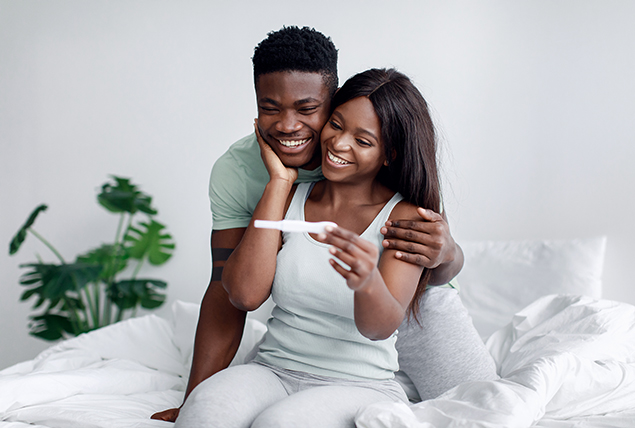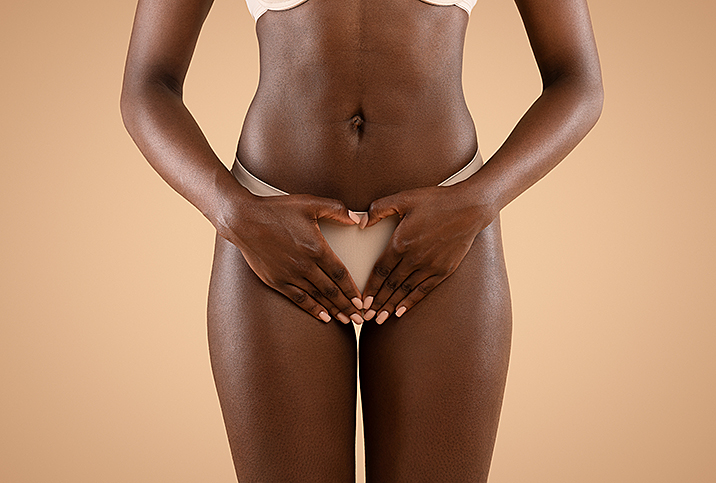Understanding the Importance of Timing When Trying to Conceive

Each month during the menstrual cycle, women who are of reproductive age release one mature egg with the goal of it being fertilized. This process is called ovulation and, when properly synced with sex, it can lead to conception.
If that's your goal, timing is everything, according to Laura Purdy, M.D., an OB-GYN based in Tennessee and the chief medical officer of Wisp, a women's sexual and reproductive telehealth provider. The window of fertility is small and specific, she said, so here's what you need to know about getting it right.
The best time for sex
According to Purdy, the ideal time for sex is when the egg is ejected from the ovary, which typically happens around the 14th day of the menstrual cycle. At this point, the egg has to get sucked up by the fimbriae, which are finger-like structures that "look like little sea anemones" on the outermost edge of the fallopian tube. Then it has to travel down the fallopian tube.
During sex, the sperm are ejaculated into the posterior vaginal canal. They then have to get through the cervical mucus and the cervix.
"They have to get all the way through the uterus and not die," Purdy said. "That's why there are millions of them—there are a lot of stragglers."
Ideally, if the timing is right, the sperm meet the egg at the peak of the fallopian tube and start chewing away at the protective coating that surrounds the genetic material inside the egg. Once the first sperm breaks through, the process is over and the egg has been fertilized. On rare occasions, two sperm might make it through, which is how fraternal twins develop, she added.
"When fertilization happens, the cells start dividing," Purdy said. "So the timing has to be perfect in order to make that happen. If they miss it, if the egg has already made it all the way down into the uterus, the likelihood of conception is unlikely."
How to sync sex with ovulation
To increase your chances of conceiving, Purdy said it's a good idea to have sex 48 hours before ovulation, and an ovulation test strip is the best way to determine this time frame.
Ovulation test strips look for a surge in luteinizing hormone (LH) in urine. LH is secreted by the brain and signals to the ovary to release the egg. This surge occurs about 12 to 48 hours before the egg is actually released.
"If you can have sex when you're having that LH surge, then the sperm will be where they need to be in order to fertilize the egg at the right place and the right time," Purdy said.
It is possible to guess when you might be ovulating based on your last period and physical symptoms such as nausea, headaches, soreness in the pelvis or lower abdomen, breast tenderness, light spotting or brown discharge, and sticky and stretchy cervical mucus.
But everybody is different, so using a test is the ultimate way to be precise.
Purdy recommended using an ovulation test strip and having sex on the day that it's positive, then again 48 hours after that, and again another 48 hours later.
"That should cover you for the entire window of fertility," she said.
Common misconceptions
In her work, Purdy said she often hears from people who believe you can get pregnant at any point during your cycle, but that is simply untrue. In the vast majority of situations, you cannot get pregnant outside of that specific window, she said.
"Miracles happen, strange things happen, atypical situations happen," Purdy said. "But in the classic situation, there's about a four- to five-day window."
Similarly, she said many people are unaware that the fertility window generally occurs around the middle of the menstrual cycle, though it can be slightly earlier or later.
Some people get into the habit of having sex every other day for the entire month, but that depletes the sperm reserve and can actually make it more difficult to conceive, Purdy explained.
"You need a lot of sperm to overcome all those obstacles to conception," she said. "So it's actually better to have sex less frequently in the nonfertile periods and then have sex during the fertile period."
This technique is key to making the best use of the sperm and increasing your chances of becoming pregnant, she said. No matter how many times you have sex, the chances of conception during the first or last week of your cycle are slim to none.
This is not to say that timing intercourse with the nonfertile periods should be considered a foolproof method of contraception because, as Purdy said, miracles do happen. But if you're actively trying to conceive, timing really is everything.

















